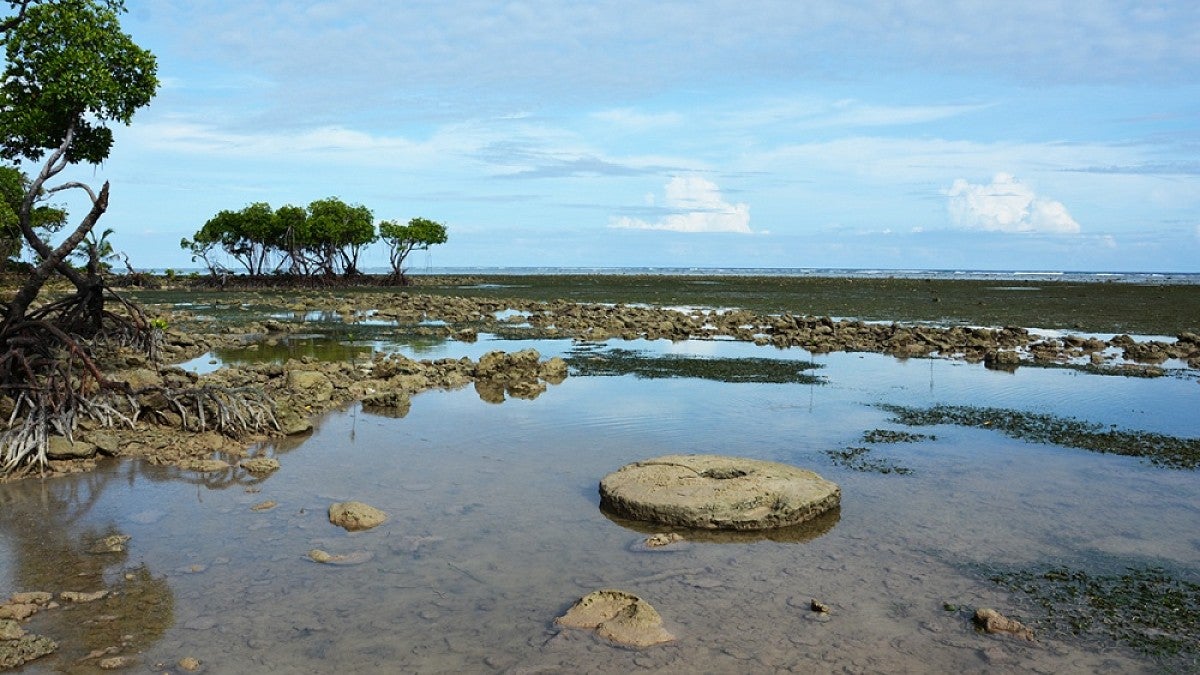More than 3,000 years ago, seafaring people began crossing the Pacific Ocean to colonize western Micronesia. In one of history’s most epic human migrations, they navigated hundreds, perhaps thousands, of miles of open ocean long after losing sight of land.
But archaeologists’ understanding of precisely when and by whom the remotest Pacific Islands were colonized is still limited by significant gaps. This summer, two UO archaeologists will journey to Yap, a remote island in western Micronesia, to try to fill in those gaps.
With funding from a National Geographic Society grant awarded through the Museum of Natural and Cultural History, Scott Fitzpatrick, a professor of anthropology and the museum’s associate director, will join graduate student Matthew Napolitano in an investigation of how and when Yap, which is about 1,000 miles east of the Philippines, was first settled by humans.
“The colonization of Yap remains one of the biggest unknowns in the Pacific because of multiple, conflicting lines of evidence, not to mention a lack of archaeological field work,” said Napolitano, whose doctoral dissertation will be based on the research.
Preliminary research conducted by Napolitano and Fitzpatrick has extended the date of Yap’s earliest settlement by 400 years, and they theorize that it goes back even further.
In addition to a poor understanding of when Yap was first colonized, the question of who first settled the island group remains unclear.
“Some clues point to an arrival from Island Southeast Asia, while others point to New Guinea. They could also have arrived from somewhere else entirely. So far, there are no clear answers,” Napolitano said.
Island Southeast Asia includes modern-day Indonesia, the Philippines and many hundreds of other islands stretching between New Guinea to the east and mainland Asia to the west.
Napolitano said he intends to provide clarity.
“Under Scott’s supervision, I hope to uncover archaeological evidence of early Yapese settlement and resolve this longstanding mystery in Pacific archaeology,” he said.
The pair will head to Yap in July to begin the National Geographic-funded phase of the research.
—By Kristin Strommer, Museum of Natural and Cultural History


